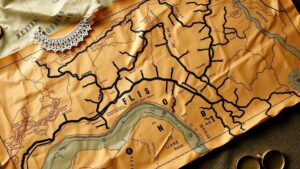Recovering Evidence of Naval Skirmishes in Coastal Battle Zones
Recovering Evidence of Naval Skirmishes in Coastal Battle Zones
The study of naval skirmishes, particularly in coastal battle zones, is crucial for understanding maritime warfare, history, and preservation of cultural heritage. Recovering evidence from these skirmishes can provide invaluable insights into tactics, strategies, and the social dynamics of the time. This article delves into the methodologies, technologies, and case studies involved in this complex field of research.
The Importance of Historical Context
Naval skirmishes have occurred throughout human history, ranging from ancient conflicts to modern engagements. Understanding the historical context is vital when recovering evidence, as it sets the stage for what types of artifacts and data may be present. For example, the Battle of Midway in World War II not only transformed naval strategy but also left behind wreckage and artifacts that are essential for study.
Methodologies for Evidence Recovery
Recovering evidence from naval skirmishes involves a variety of methodologies, each tailored to the geographical and historical context of the engagement. Here are some primary approaches:
- Underwater Archaeology: This involves divers and remotely operated vehicles (ROVs) that explore submerged battle sites. For example, the recovery of the USS Monitor off the coast of North Carolina in the 1970s revealed artifacts that expanded our understanding of Civil War naval technology.
- Historical Research: Researchers often begin by examining historical documents, maps, and records related to the battles. This background research helps guide physical recovery efforts and provides context for artifacts. The work surrounding the site of the Spanish galleon Nuestra Señora de Atocha is a prime example, where historical accounts helped locate the sunken treasure.
- Geophysical Surveying: Technologies such as side-scan sonar, magnetometers, and sub-bottom profilers are employed to identify shipwrecks and battle remnants. e tools help create a comprehensive map of the underwater terrain, helping researchers locate artifacts without extensive diving.
Technological Advances in Recovery
Recent advancements in technology have enhanced the efficiency and effectiveness of evidence recovery in coastal battle zones. Some notable examples include:
- 3D Scanning: Utilizing 3D imaging techniques allows researchers to create detailed models of wrecks and artifacts. The project involving the HMS Victory has demonstrated how 3D scans can help reconstruct historical battles and ship conditions.
- Artificial Intelligence: AI algorithms are increasingly employed to analyze large datasets from sonar scans and historical records. A collaborative project at the University of Rhode Island is using machine learning to identify potential shipwreck sites based on pattern recognition.
- Submersible Drones: These unmanned vehicles can operate in difficult environments, providing real-time data to researchers. For example, the underwater drone missions executed at the Battle of Jutland site showcased the potential for remote exploration of deep and hazardous waters.
Challenges in Evidence Recovery
The recovery of evidence from naval skirmishes poses various challenges. These challenges include:
- Environmental Factors: Coastal areas are often subject to erosion, sedimentation, and extreme weather conditions that can obscure or damage artifacts. climate change-related increase in sea levels further complicates preservation efforts.
- Legal and Ethical Considerations: Many naval battle sites are protected under national and international laws. The rights of descendants of deceased sailors and treaties concerning underwater cultural heritage must be carefully navigated to avoid legal repercussions.
- Funding and Resources: Research in this field often requires substantial investment in terms of both equipment and human resources. Without adequate funding, many potential recovery projects may remain unfulfilled.
Case Studies
Examining specific case studies can illuminate the various methodologies and challenges faced in recovering evidence of naval skirmishes:
- The Battle of Guadalcanal: This World War II battle site has seen extensive underwater archaeology, leading to the recovery of aircraft and military vessels. e artifacts provide crucial insights into the logistics and tactics used by the United States Navy.
- The Battle of Traffalgar: Ongoing projects around this iconic battle site have combined traditional archaeological methods with the latest sonar technology to uncover shipwrecks and associated battleship artifacts, enhancing our understanding of naval tactics from over two centuries ago.
Conclusion and Future Directions
Recovering evidence of naval skirmishes in coastal battle zones is a multifaceted endeavor that merges history, archaeology, and cutting-edge technology. By understanding the methodologies, technological advancements, and challenges involved, researchers can better preserve and interpret these critical parts of our maritime heritage.
As both technology and methodology continue to evolve, future projects will likely utilize even more sophisticated techniques, allowing for a more thorough understanding of naval warfares impact on history. Interdisciplinary collaboration between archaeologists, historians, and technologists will be essential to advancing the field.
To wrap up, the lessons learned from past skirmishes not only inform contemporary military strategy but also offer a glimpse into humanitys enduring conflicts and resilience.


